A Complete Guide To Nishiki Market In Kyoto, Japan
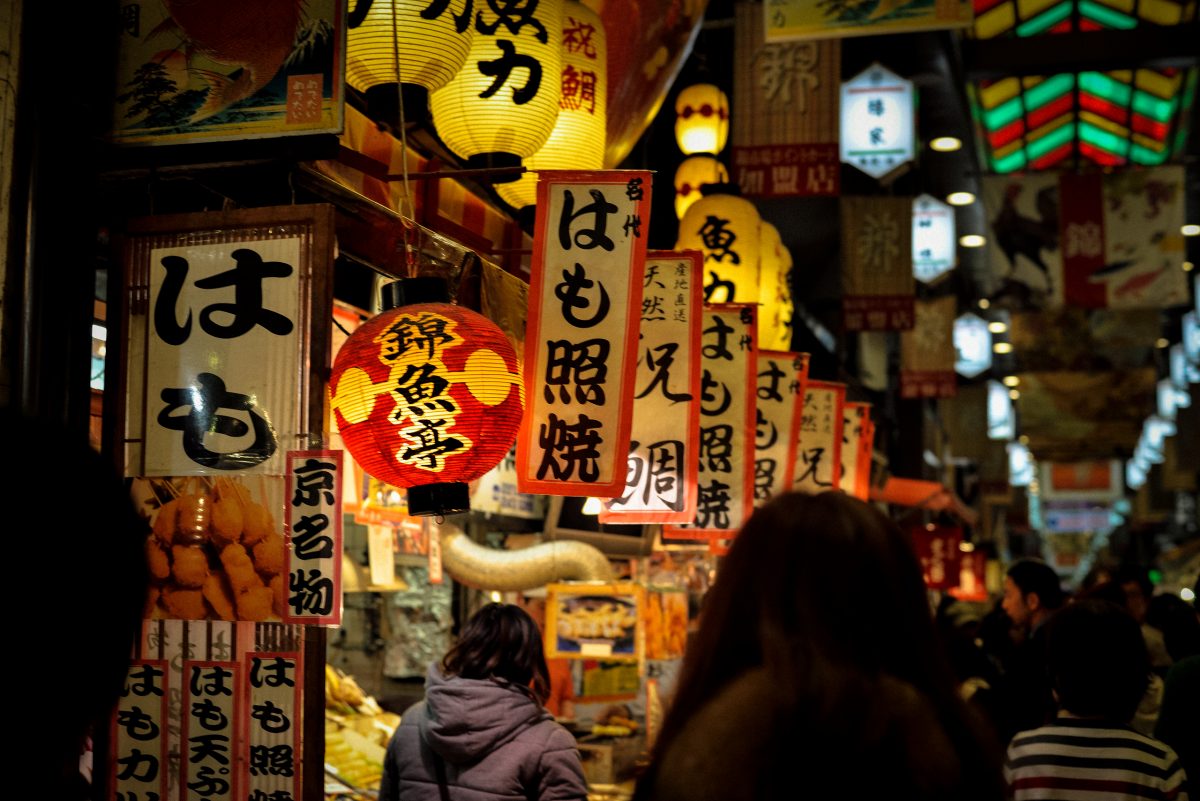
Culture and food lovers travelling to Kyoto, Japan, will inevitably find themselves at some point or another at Nishiki Market. A five-block long covered marketplace, Nishiki Market is famous for its fresh food and local culinary delicacies.
Over 130 shops and restaurants line the marketplace’s walkways. These shops sell traditional home-cooked dishes, fresh produce and quirky Japanese oddities. And with the wide array of food on offer, it’s no surprise where the market got its nickname “Kyoto’s Kitchen” from.
Most of the stores and stalls you’ll walk past are owned by local families and have been this way for generations. The huge variety of treats and delicacies they sell are mostly home-grown, freshly caught, and traditional prepared using family recipes. From skewered octopus heads to pickled fish, fresh tofu and mochi, you can treat your taste buds to flavours you’ve never tried before.
As well at eating your fill, the bustling market is alive with both locals and tourists, and is a great place to people-watch, as Kyoto residents go about their daily lives.
If you’re feeling peckish, many shops will freely give out samples for you to try, or you can simply head to one of the nearby restaurants. You can also find a range of knives, pots and cookware, souvenirs and spices, engraved chopsticks and anything you might need to prepare your Japanese meal at home.
But before you rush off to explore one of the best places to eat in Kyoto, there are a few things you might want to know about Nishiki Market.
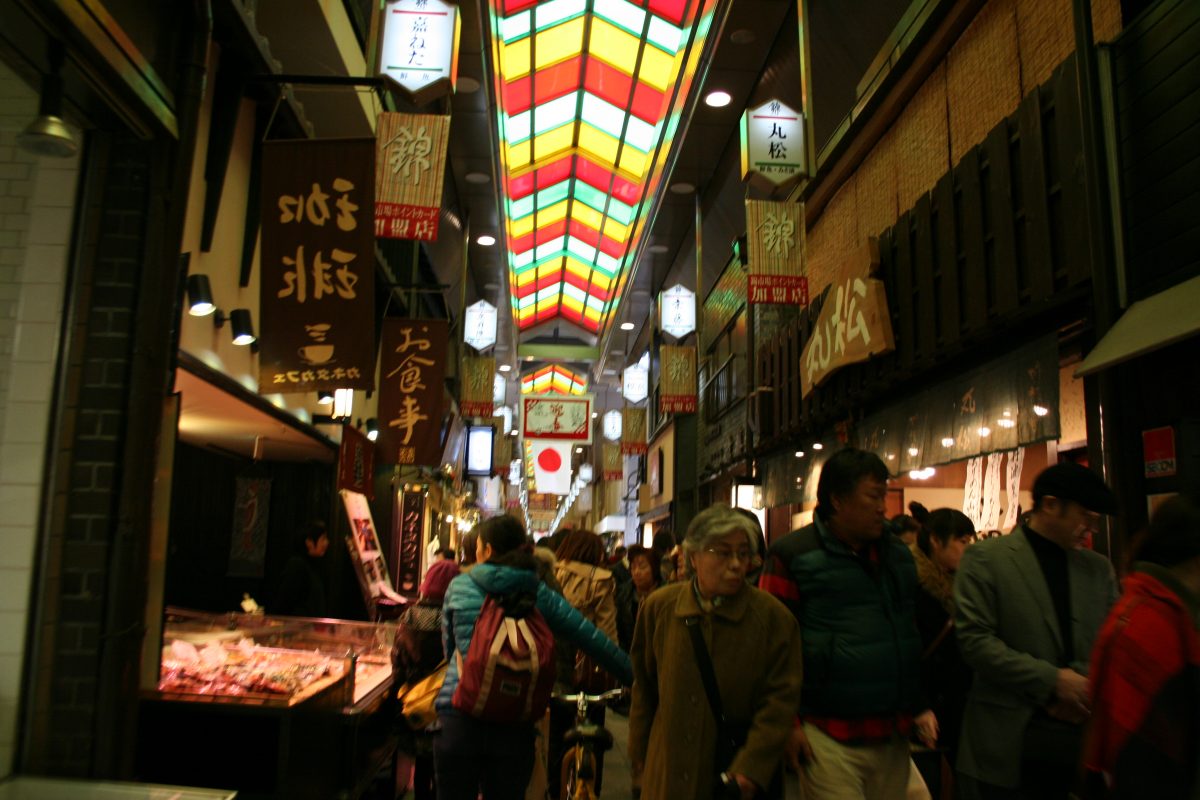
Photo by Kristin on Flickr
History Of Nishiki Market
Nishiki Market has been around for a long time – over 700 years in fact. The now sprawling and popular market grew from humble beginnings, starting off as a wholesale fish district. The first shops and stalls opened as early as 1310.
The market eventually changed from wholesale to retail as more and more families moved in to sell their produce. Since then, it has been growing steadily and gaining popularity not only with the locals, but also among foreign visitors.
Even now, many of the shops at Nishiki Market have been owned and run by the same family for generations, although newer shops and retail stores are beginning to appear. Though the newer, shiny stalls might seem tempting, keep an eye out for the smaller family-run stores. Those are the ones to go to for a truly traditional culinary experience.
What To Eat At Nishiki Market?
1.
Skewered Octopus
Known as “tako tamago” in Japanese, these skewered baby octopuses have quail eggs inside their heads. A mixture of salty and sweet flavours, this traditional treat is especially popular among children and teens and makes for a delicious snack.
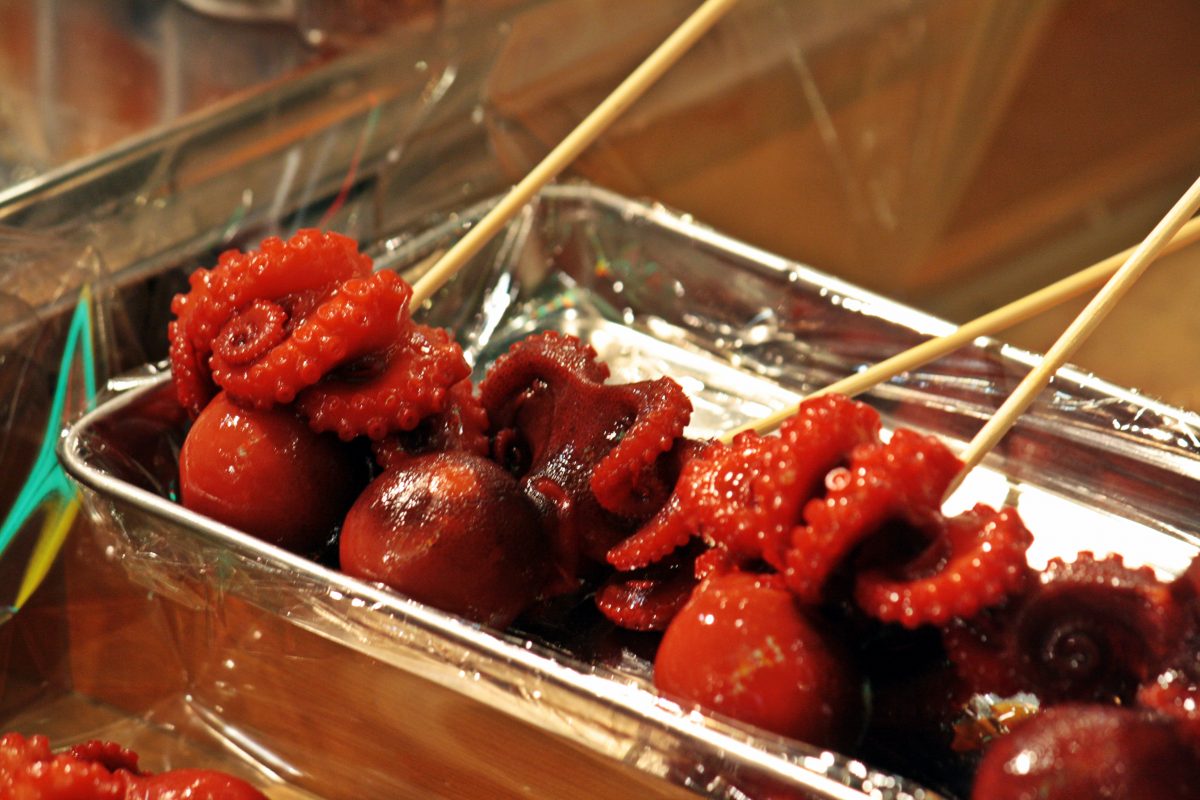
Photo by DavideGorla on Flickr
2.
Mochi
These Japanese rice cake sweets can be found all over the country and come in a variety of flavours. With different colours, shapes and fillings, make sure to try more than one type of mochi to find the one you like most. From pink leaf sakura mochi to white Kashiwa mochi filled with red bean paste, green dusted matcha mochi and chewy dango mochi, there are many to choose from.
3.
Chinese Dumplings
Although they’re not traditionally Japanese, these delicious dumplings are freshly rolled and stuffed with meat. They make for a wonderful, filling lunch or late-afternoon snack.
4.
Fish Cakes
Traditional fish cakes, or “kamaboko” are made using fresh fish which is mashed up and made into a paste. This paste, called “surimi”, is then mixed together with different seasonings and spices, giving it different distinct flavours.
What To Buy At Nishiki Market?
1.
Pickled Veggies
Tsukemono, or pickled vegetables are a colourful side dish and tangy addition to any meal. Choose from bright steam-packed pickled radishes, turnips and aubergines among other things, pickled overnight or over a longer period. They are pickled using soy sauce, rice bran, salt and miso.
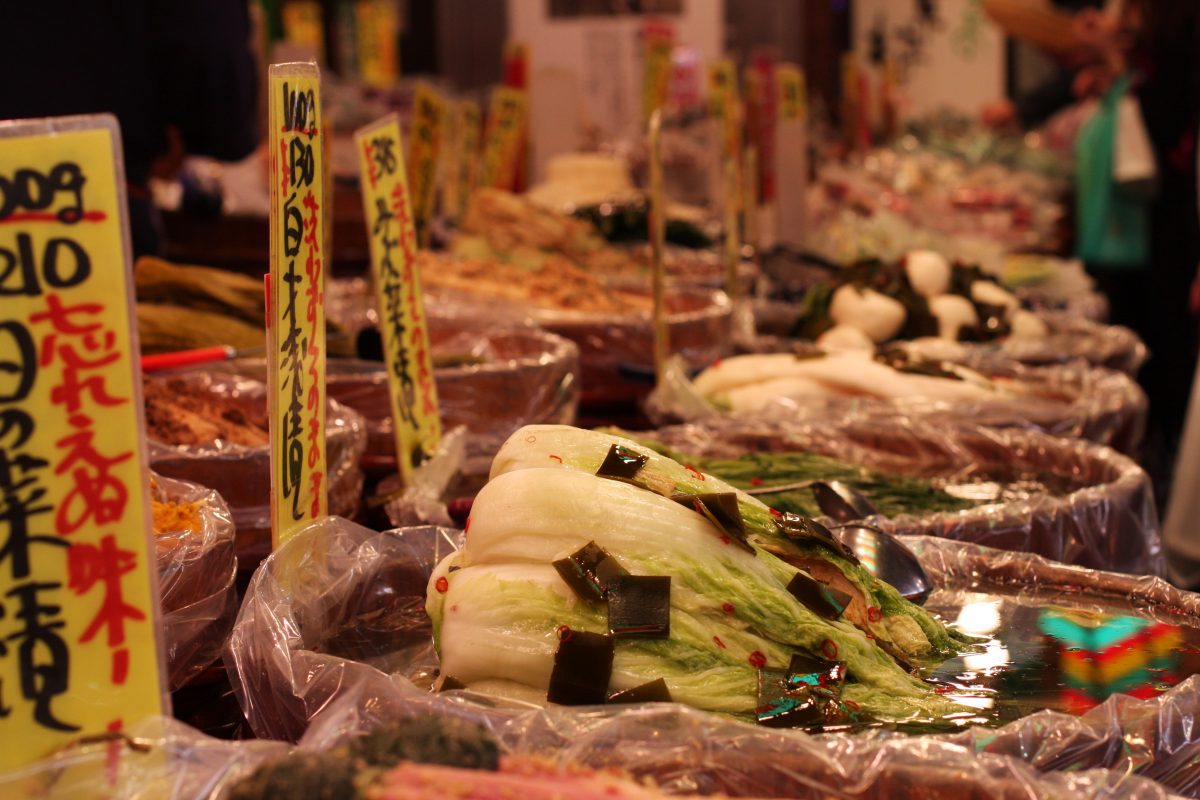
Photo by Jan on Flickr
2.
Rice Toppings
Adding a sprinkle of “furikake”, or rice seasoning can really liven up an otherwise quite bland bowl of rice. Made from a combination of sugar, salt, dried seaweed, chilli, sesame seeds and fish flakes, there are many different seasonings to taste and choose from.
3.
Kyoto Vegetables
Kyoysai, Kyoto veggies are a collection of around 41 traditional vegetables in bright colours, shapes and full-on flavours. They are said to have more vitamins and minerals than other vegetables and are the key ingredient in many dishes in the country.
4.
Dried Fish
Although an acquired taste, fish and strong flavour enthusiasts will love the selection of pungent tiny dried fish. With scoops to measure them out and take them home, you can eat the tiny fish as snacks or as toppings on your meals.
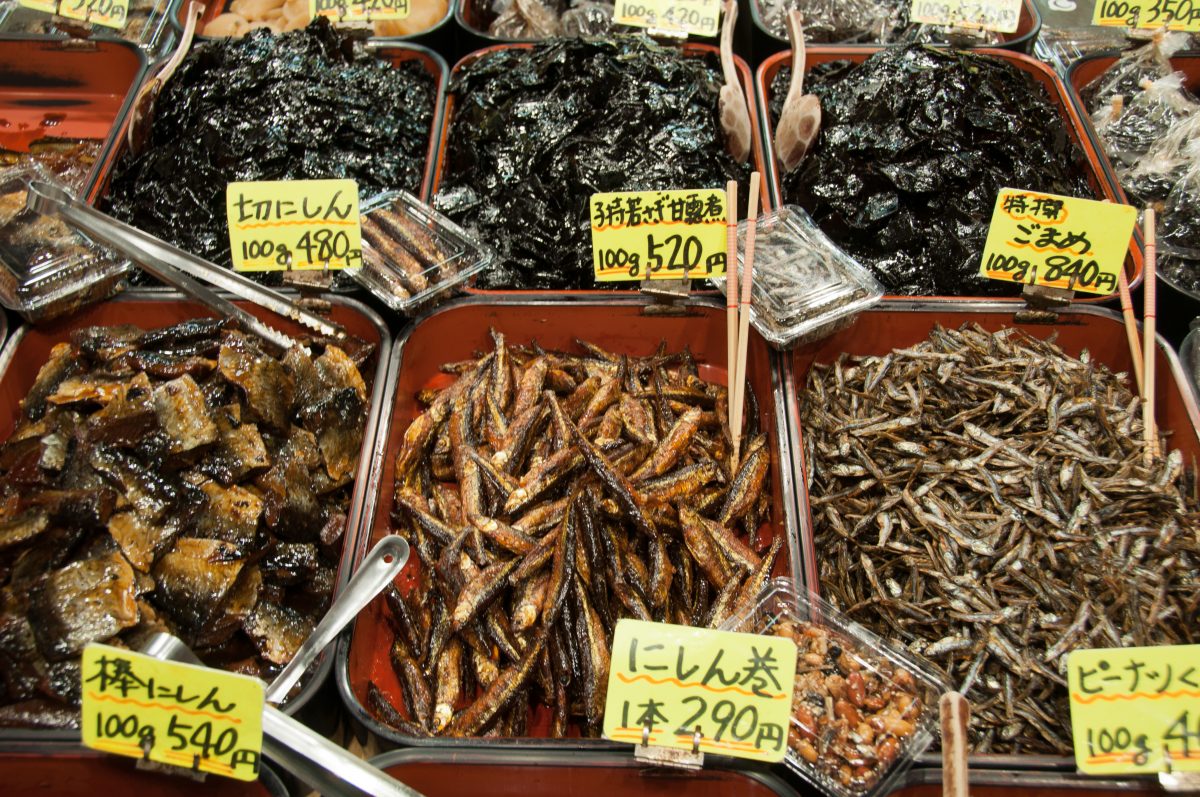
Photo by Paul Asman and Jill Lenoble on Flickr
Best Restaurants In Nishiki Market
1.
Nishiki Warai Rakusai
For delicious food served on a sizzling teppan (hot plate) at your table, Nishiki Warai Rakusai serves a selection of moderately-priced Japanese favourites. The eatery is known for its okonomiyaki, an iconic Japanese savoury pancake served with toppings such as shredded cabbage, fried egg and meat. The gyozas (Japanese pan-fried dumplings) are also especially tasty here.
2.
Hale
For mouth-watering vegan and veggie meals, head to Hale, a hidden gem at Nishiki Market. Though this place might be a little difficult to find, the food is totally worth it. With mushroom rice bowls, steamed or pickled veggies, tofu and noodles, this eatery will satisfy veggies, vegans and meat-eaters alike.
3.
Nishiki Daiyasu
If you’re a fan of fresh seafood, stopping by Nishiki Daiyasu for lunch is a must. The restaurant is a seafood lover’s dream, with raw and roasted oysters, fried scallops, clams and mussels served with a smile.

Photo by [cipher] on Flickr
Nishiki Market Opening Hours
The market operates every day (including Sundays) from 9:30 am to 6 pm. Some stalls may open or close earlier, as opening times depend on the stall-owners themselves. We’d advise getting there early before the crowd start and the marketplace gets too hot and busy. The best time to go is around 11 am when almost all of the shops are open for business, but before the tour groups arrive. Long queues usually appear at shops and stalls selling popular food items in the afternoon, so arriving earlier will save you waiting around.
Make sure to give yourself lots of time too – most people spend around or over an hour at the market.
How To Get To Nishiki Market?
With its central location and easy access points, it is fairly easy to get to the Nishiki Market.
Sitting just a block away from Shijo Avenue, you can walk to Nishiki Market in five minutes.
The closest bus stops are either Shijotakakura or Shijokawaramachi stations located on the Shijo-dori shopping street.
If you’re coming by train, get off at Kawaramachi or Karasuma Station on the Hankyu Line, and if you’re arriving on the metro, Karasuma-Oike is the nearest station.
Have You Visited Nishiki Market Yet?
Have you walked around the stalls and snacked on any treats at Nishiki Market? What did you think of this Japanese food market and its selection of Kyoto food?
What did you sample, and which are your favourite local foods from the market? Are there any other stalls, delicacies or restaurants you’d recommend?
We’d love to hear about your Nishiki Market experiences!
Leave us your questions, stories and messages in the comments below!

